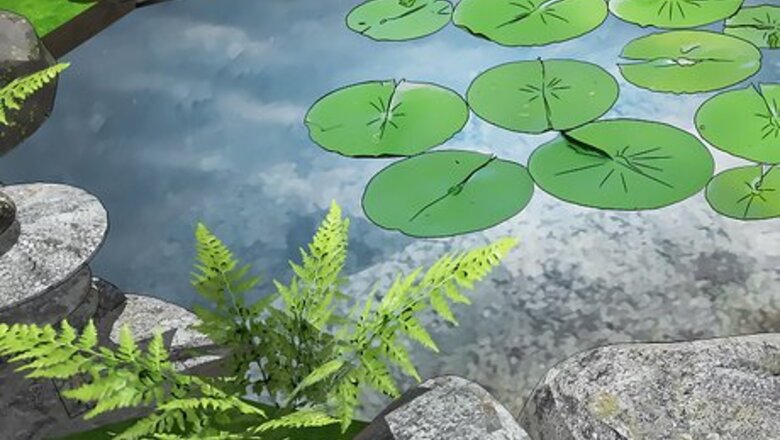
views
Cleaning Algae with Natural Solutions
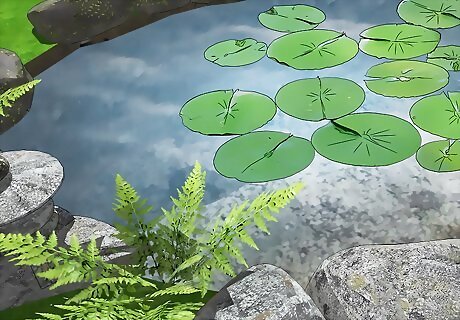
Plant aquatic plants in your pond to absorb algae forming nutrients. As a living organism, algae draws nutrients from the water in order to live. Add some more appealing plants, such as lily pads, cattails, or watercress, to your pond that will suck up all of those nutrients and stop algae from being able to grow. This can help keep your water clear and make your pond look more interesting. Your local nursery or garden store should have a wide selection of plants perfect for your pond. Ask if you’re unsure about the best types of plant to use. For best results, cover around 60% of the surface of your pond with plants.
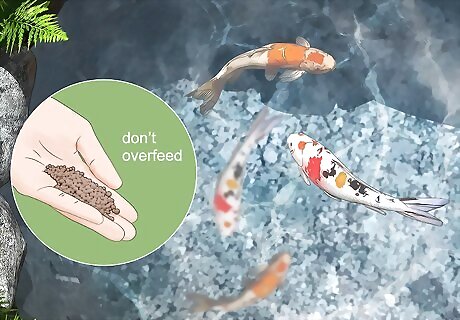
Avoid overfeeding your fish to stop leftover food from rotting. If you have fish in your pond, you should only feed them the amount of food that they can consume in around 5 minutes. If you feed them more than this, the excess food will drift to the bottom and rot, which can be a catalyst for algae growth. If you’re unsure about how much to feed your fish, check the instructions on your fish food for a rough guide. You should be feeding your fish once a day with a small sprinkling of food. Watch your fish for 5 minutes after you feed them to see how much food is left over and adjust accordingly.
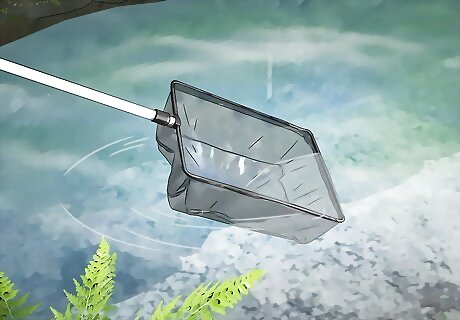
Remove the algae from the surface of your pond with a skimmer or algae net. The easiest way to clean algae from the top of a pond is simply lifting it up and off. Use a skimmer or algae net to skim the surface of your pond, pulling the algae free and removing it from the pond. This may take a while, but will give you immediate results when it’s done. Although this is a very quick solution, it’s not one that will work long-term. Removing the algae won’t stop it from growing back.
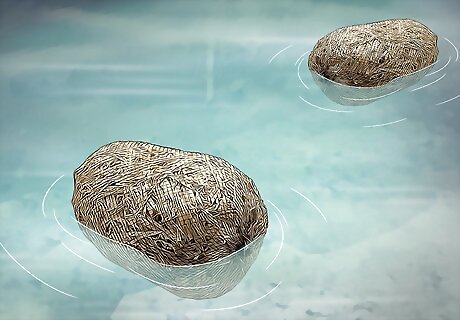
Add barley straw to the pond to slowly kill the algae. As it rots, barley straw will slowly release small amounts of hydrogen peroxide that will kill any algae growing in your pond. Buy a small bale of barley straw and throw it into your pond when you first notice algae growing in your pond. Over the course of a few weeks, you should notice the algae in your pond disappearing. Use 8 ounces (0.23 kg) of barley straw for every 1,000 gallons (3,800 L) of water in your pond. Barley straw should be available from your local pet shop, as it is used for bedding for a lot of small animals. Otherwise, it may be available at a specialty pond store or online. The amount of hydrogen peroxide released by the rotting barley straw should be just enough to kill the algae, without killing any other plants in your pond.
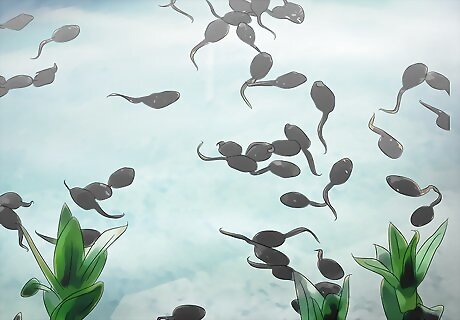
Introduce algae eating creatures to your pond. Similarly to using plants to prevent algae from growing, there are plenty of animals you can add to your pond that will directly feed of algae. Add a few tadpoles or some aquatic pond snails to your pond and keep an eye on them as they grow. They should begin eating the algae in your pond, as well as bringing a little more life to it. Tadpoles will also eat mosquito and other insect larvae that may settle on the top of your pond.
Using Mechanical and Chemical Solutions
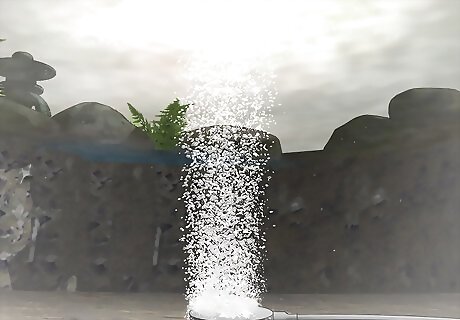
Install a fine bubble aerator to increase the movement of the water. One of the main causes of algae bloom is the lack of water movement. Purchase a fine bubble aerator and install it in the deepest section of your pond. This will constantly aerate the water, keeping it moving to produce a healthier environment in the pond and prevent harmful algae. Fine bubble aerators should be available from a specialty pond store. If you don’t have one nearby, there are plenty of online retailers that sell aerators.
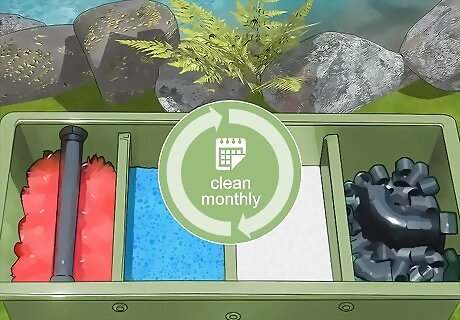
Clean your filtration system once a month to keep the water clean. If your pond has a filtration system installed but algae is still able to grow, you may need to clean the filter inside the system more often. Follow the manufacturer’s instructions to clean your filter at least once each month to prevent algae from forming. A pond filter isn’t necessary, but can be useful in keeping the water in your pond clean. If you have a large mechanical filter, you should be able to clean it by attaching a backwash hose and backwashing the filter until the water runs clear. For smaller filters, remove the filter and clean it with non-chlorinated water to remove any obvious grime, gunk, or algae. Make sure you clean out your pond filter away from the pond. If you clean it too close the pond, everything you remove from the filter will end up back in your pond over time.
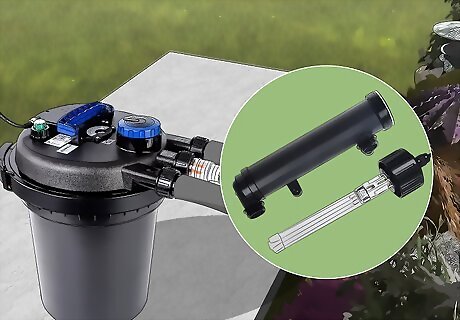
Use an ultraviolet light sterilizer to destroy algae. Ultraviolet light is great at sterilizing and damaging a lot of organic materials, including algae. Install a pond filter that has an ultraviolet light sterilizer in your pond to break down and destroy algae as it grows. After 3 to 5 days, your water should be free of algae and clear. Filters with UV light sterilizers will be more expensive than other filters, but also a lot more effective. They should be available from a specialty pond store or online. This is a very effective way to kill algae in ponds, but may also harm beneficial bacteria and other positive organic material in your pond.
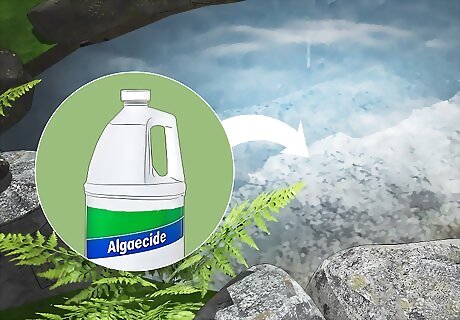
Treat the pond water with algaecides. If you can’t clean your water and remove your algae any other way, you can use algaecides to treat the water and kill the algae. Purchase an algaecide or herbicide that contains copper and spray it over your pond to begin killing off the algae. You should see the algae begin to die off within 3 to 10 days from the first treatment. Algaecides and herbicides are made of chemicals that are designed to kill algae, so they will be more harmful than other natural methods used to remove algae. Use algaecides as a last resort. Always consult the instructions on your chosen algaecides or herbicides before using them in a pond with plants or living creatures. Make sure you check with local regulations before treating your water with an algaecide. You may need a permit for some chemicals in some locations. Always follow the manufacturer’s instructions when working with an algaecide. Using more than is required may damage your pond or harm any wildlife living in or around it. EXPERT TIP Scott Johnson Scott Johnson Landscape & Design Consultant Scott Johnson is the Owner and Lead Design Consultant for Concrete Creations, Inc., an award-winning landscape and design company based in the San Diego, California metro area. He has over 30 years of experience in the pool and landscape construction industry and specializes in large estate outdoor environment construction projects. His work has been featured in San Diego Home & Garden Magazine and on Pool Kings TV Show. He earned a BS degree in Construction Management with an emphasis in Architecture and CAD design from Northern Arizona University. Scott Johnson Scott Johnson Landscape & Design Consultant Our Expert Agrees: To prevent algae from blooming in the spring and summer, treat your pond each April with an algaecide. If you have fish in your pond, just make sure you choose a product that's safe for them before you use it.
Preventing Algae from Forming
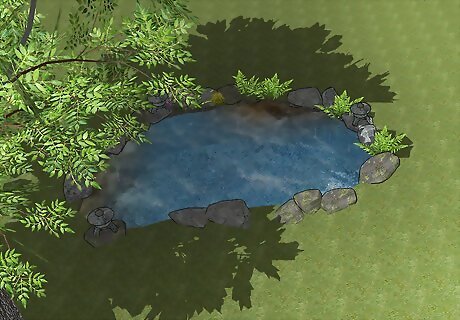
Build your pond in a shady area to limit sunlight. Algae needs sunlight to grow, so if you’re still in the planning stages of a new pond, consider installing it in an area that only gets a little sun. Try building a pond near a tall wall, or use a shade mat or sail to stop algae from being able to grow. You shouldn’t rely on shade that comes from large trees, as they may drop leaves into the pond. Fallen leaves will eventually rot and let algae grow, meaning you’ll need to clean your pond more often. Shade mats and sails are custom-made barriers that will prevent excess sunlight from getting into your pond. They should be available at specialty pond stores or online.
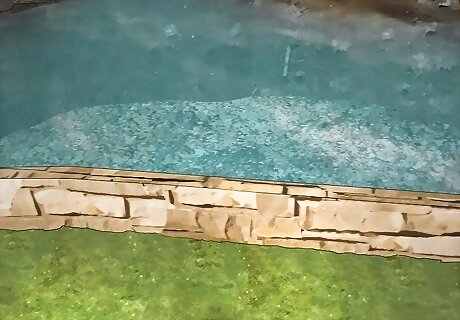
Add a rim or border around your pond to keep out new water. Water that runs off from your garden may contain nutrients that algae can feed on to grow. Build a slight lip rim, roughly 1 inch (2.5 cm) high, around the edge of your pond to limit uncontrolled water from flowing into the pond. This will also help keep fertilizer, herbicides, and pesticides from getting into your pond through water runoff. All of these can be very detrimental to the health of your pond and the living things in it.
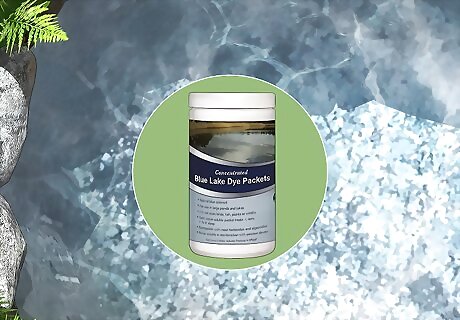
Color the water with a pond dye to reduce the amount of sunlight absorbed. There are several dyes, normally blue in color, that are designed to be added to a pond to stop sunlight from reaching the bottom, which will prevent the formation of algae. Purchase a pond dye of your choice and follow the manufacturer’s instructions to dye your pond. Pond dye should be available online or at your local specialty pond store. The amount of pond dye needed will vary based on the size of your pond. Always follow the manufacturer’s instructions to avoid over-dyeing your pond.











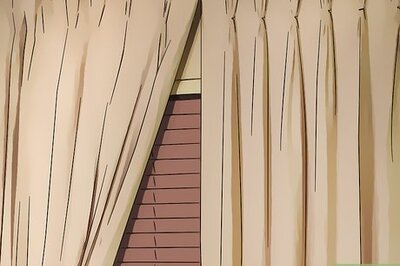








Comments
0 comment